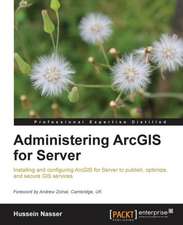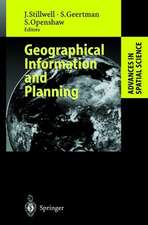High Performance Computing and the Art of Parallel Programming: An Introduction for Geographers, Social Scientists and Engineers
Autor Stan Openshaw, Ian Turtonen Limba Engleză Hardback – 25 noi 1999
Preț: 2022.05 lei
Preț vechi: 2527.56 lei
-20% Nou
Puncte Express: 3033
Preț estimativ în valută:
386.92€ • 403.18$ • 320.37£
386.92€ • 403.18$ • 320.37£
Carte tipărită la comandă
Livrare economică 03-17 aprilie
Preluare comenzi: 021 569.72.76
Specificații
ISBN-13: 9780415156929
ISBN-10: 0415156920
Pagini: 304
Ilustrații: 29 tables
Dimensiuni: 156 x 234 x 24 mm
Greutate: 0.7 kg
Ediția:1
Editura: Taylor & Francis
Colecția Routledge
Locul publicării:Oxford, United Kingdom
ISBN-10: 0415156920
Pagini: 304
Ilustrații: 29 tables
Dimensiuni: 156 x 234 x 24 mm
Greutate: 0.7 kg
Ediția:1
Editura: Taylor & Francis
Colecția Routledge
Locul publicării:Oxford, United Kingdom
Public țintă
Postgraduate, Professional, and UndergraduateCuprins
Chapter 1. High Performance Computing: why bother with it?
Chapter 2. High Performance Computing applications in Geography and GIS
Chapter 3. Parallel and High Performance Computing: Concepts, Principles and Theory
Chapter 4. Types of Parallel Processing Hardware and Programming Paradigms
Chapter 5. Programming Vector Supercomputers
Chapter 6. Shared Loop and Data Parallel Programming
Chapter 7. Parallel Programming using Simple Message Passing
Chapter 8. Parallelising the Geographical Analysis Machine using MPI
Chapter 9. Optimising performance and debugging hints
Chapter 10. Putting it all together
Chapter 11. Epiglogue for Geographical and Social Scientists
Chapter 2. High Performance Computing applications in Geography and GIS
Chapter 3. Parallel and High Performance Computing: Concepts, Principles and Theory
Chapter 4. Types of Parallel Processing Hardware and Programming Paradigms
Chapter 5. Programming Vector Supercomputers
Chapter 6. Shared Loop and Data Parallel Programming
Chapter 7. Parallel Programming using Simple Message Passing
Chapter 8. Parallelising the Geographical Analysis Machine using MPI
Chapter 9. Optimising performance and debugging hints
Chapter 10. Putting it all together
Chapter 11. Epiglogue for Geographical and Social Scientists
Descriere
Concerned with the art rather than the science of Parallel Programming, this volume provides a plain and practical introduction to a subject that has previously been heavily encrypted in computer jargon.

























